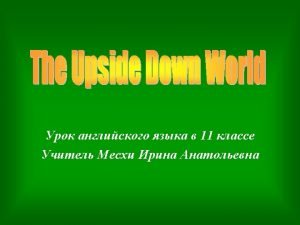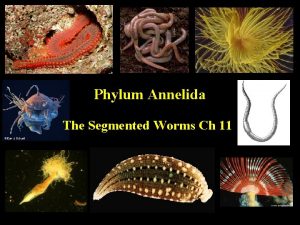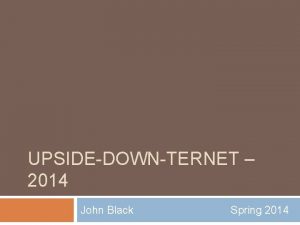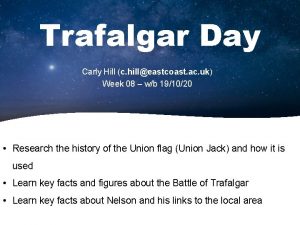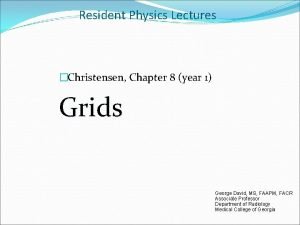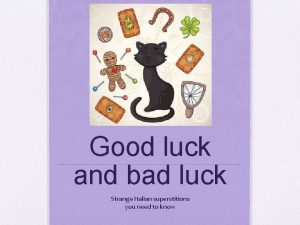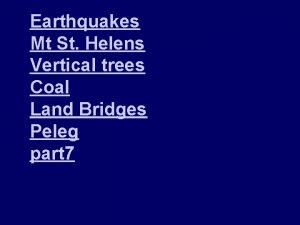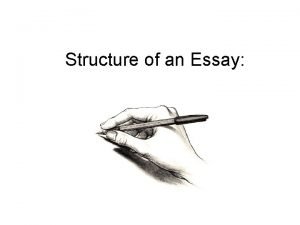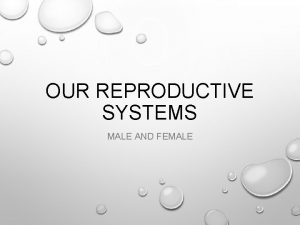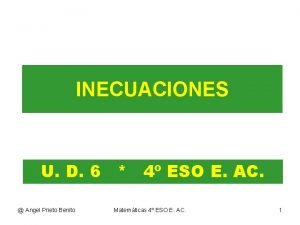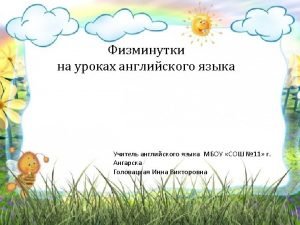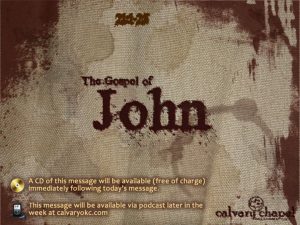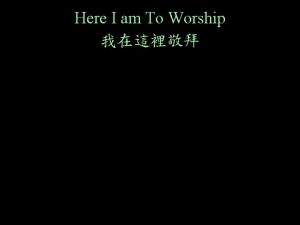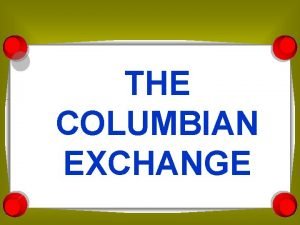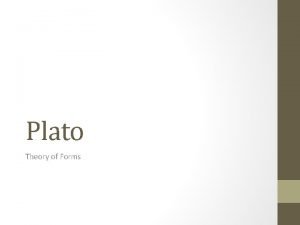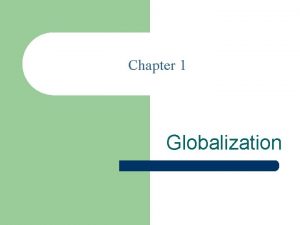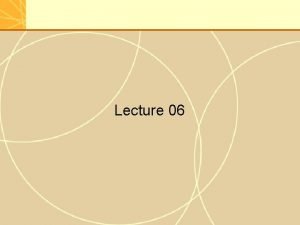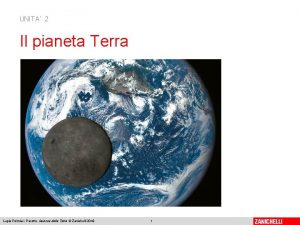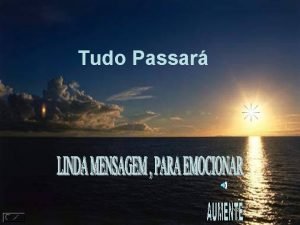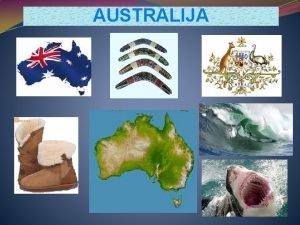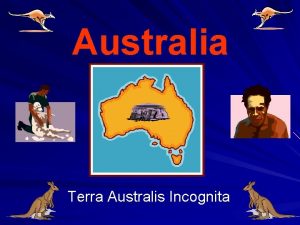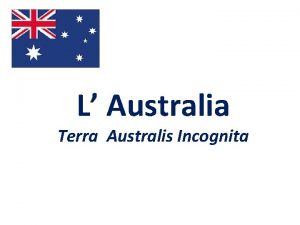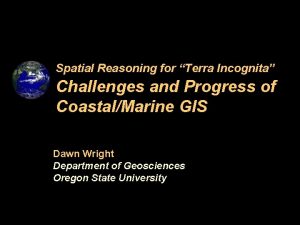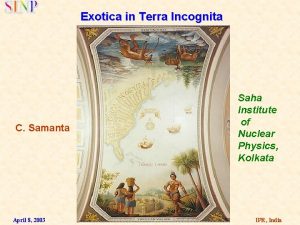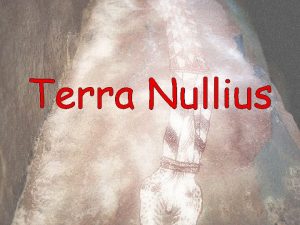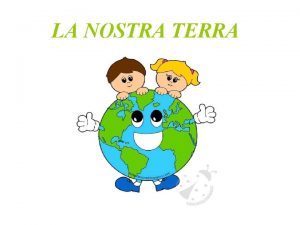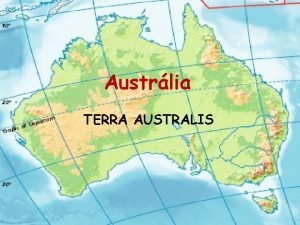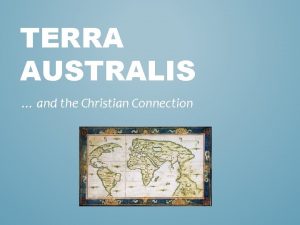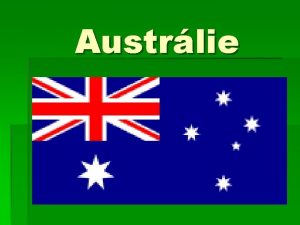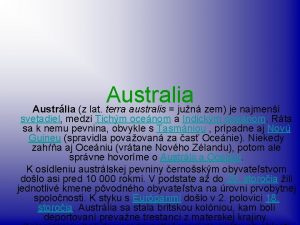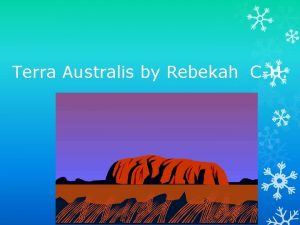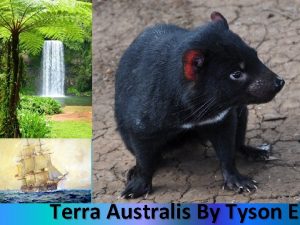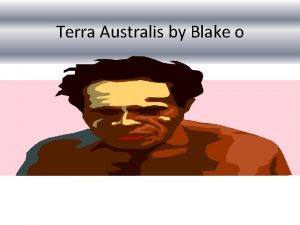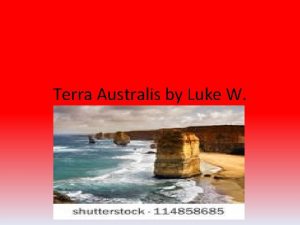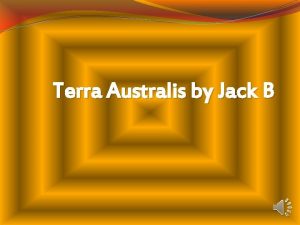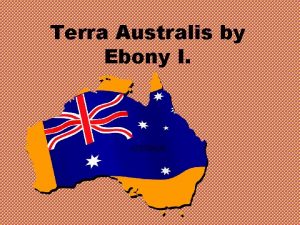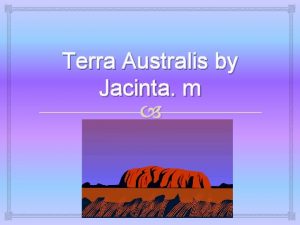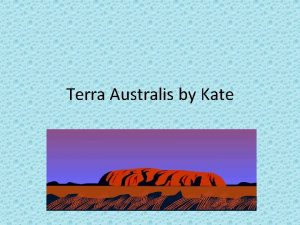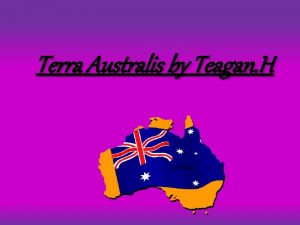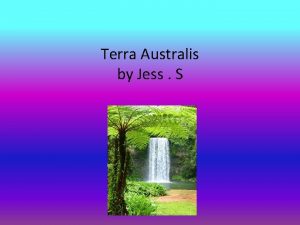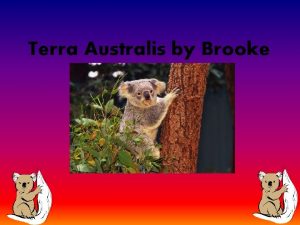THE UPSIDE DOWN WORLD Terra australis incognita The





















































































- Slides: 85



THE UPSIDE DOWN WORLD Terra australis incognita The unknown southern land • Australia is called «the upside down world» . Why?

What do you associate Australia with? • • • Country, island, continent Aborigines dingo kangaroo Sydney Tasmania Olympic Games 2000 Oceans Beaches The southern hemisphere

Original survivors • Aborigine means first inhabitant. Some Aborigines live in the sea, some live in the hot, dry empty desert near the middle of What do you know Australia. about them?

Original survivors The Aborigines were (1) in the unique Australian Complete landscape. the Theytext knew (2), the but with usually their diets were (3) and (4). By words from the box. contrast, the first European settlers found Australia (5) and (6). They expected it to be like their (7) and did not know how (8) to such different conditions. As a result , they suffered from (9) and thirst while the Aborigines, whom they considered primitive, were (10).

Original survivors The Aborigines were (1) in the unique Australian landscape. They knew (2), but usually their diets were (3) and (4). By contrast, the first European settlers found Australia (5) and (6). They expected it to be like their (7) and did not know how (8) to such different conditions. As a result , they suffered from (9) and thirst while the Aborigines, whom they considered primitive, were (10). аt home well fed rich inhospitable hunger strange own country to adapt hardship varied

Original survivors The Aborigines were at home in the unique Australian landscape. They knew (2), but usually their diets were (3) and (4). By contrast, the first European settlers found Australia (5) and (6). They expected it to be like their (7) and did not know how (8) to such different conditions. As a result , they suffered from (9) and thirst while the Aborigines, whom they considered primitive, were (10). аt home well fed rich inhospitable hunger strange own country to adapt hardship varied

Original survivors The Aborigines were at home in the unique Australian landscape. They knew hardship, but usually their diets were (3) and (4). By contrast, the first European settlers found Australia (5) and (6). They expected it to be like their (7) and did not know how (8) to such different conditions. As a result , they suffered from (9) and thirst while the Aborigines, whom they considered primitive, were (10). аt home well fed rich inhospitable hunger strange own country to adapt hardship varied

Original survivors The Aborigines were at home in the unique Australian landscape. They knew hardship, but usually their diets were rich and (4). By contrast, the first European settlers found Australia (5) and (6). They expected it to be like their (7) and did not know how (8) to such different conditions. As a result , they suffered from (9) and thirst while the Aborigines, whom they considered primitive, were (10). аt home well fed rich inhospitable hunger strange own country to adapt hardship varied

Original survivors The Aborigines were at home in the unique Australian landscape. They knew hardship, but usually their diets were rich and varied. By contrast, the first European settlers found Australia (5) and (6). They expected it to be like their (7) and did not know how (8) to such different conditions. As a result , they suffered from (9) and thirst while the Aborigines, whom they considered primitive, were (10). аt home well fed rich inhospitable hunger strange own country to adapt hardship varied

Original survivors The Aborigines were at home in the unique Australian landscape. They knew hardship, but usually their diets were rich and varied. By contrast, the first European settlers found Australia strange and (6). They expected it to be like their (7) and did not know how (8) to such different conditions. As a result , they suffered from (9) and thirst while the Aborigines, whom they considered primitive, were (10). аt home well fed rich inhospitable hunger strange own country to adapt hardship varied

Original survivors The Aborigines were at home in the unique Australian landscape. They knew hardship, but usually their diets were rich and varied. By contrast, the first European settlers found Australia strange and inhospitable. They expected it to be like their (7) and did not know how (8) to such different conditions. As a result , they suffered from (9) and thirst while the Aborigines, whom they considered primitive, were (10). аt home well fed rich inhospitable hunger strange own country to adapt hardship varied

Original survivors The Aborigines were at home in the unique Australian landscape. They knew hardship, but usually their diets were rich and varied. By contrast, the first European settlers found Australia strange and inhospitable. They expected it to be like their own country and did not know how (8) to such different conditions. As a result , they suffered from (9) and thirst while the Aborigines, whom they considered primitive, were (10). аt home well fed rich inhospitable hunger strange own country to adapt hardship varied

Original survivors The Aborigines were at home in the unique Australian landscape. They knew hardship, but usually their diets were rich and varied. By contrast, the first European settlers found Australia strange and inhospitable. They expected it to be like their own country and did not know how to adapt to such different conditions. As a result , they suffered from (9) and thirst while the Aborigines, whom they considered primitive, were (10). аt home well fed rich inhospitable hunger strange own country to adapt hardship varied

Original survivors The Aborigines were at home in the unique Australian landscape. They knew hardship, but usually their diets were rich and varied. By contrast, the first European settlers found Australia strange and inhospitable. They expected it to be like their own country and did not know how to adapt to such different conditions. As a result , they suffered from hunger and thirst while the Aborigines, whom they considered primitive, were (10). аt home well fed rich inhospitable hunger strange own country to adapt hardship varied

Original survivors The Aborigines were at home in the unique Australian landscape. They knew hardship, but usually their diets were rich and varied. By contrast, the first European settlers found Australia strange and inhospitable. They expected it to be like their own country and did not know how to adapt to such different conditions. As a result , they suffered from hunger and thirst while the Aborigines, whom they considered primitive, were (10). аt home well fed rich inhospitable hunger strange own country to adapt hardship varied

Original survivors The Aborigines were at home in the unique Australian landscape. They knew hardship, but usually their diets were rich and varied. By contrast, the first European settlers found Australia strange and inhospitable. They expected it to be like their own country and did not know how to adapt to such different conditions. As a result , they suffered from hunger and thirst while the Aborigines, whom they considered primitive, were well fed.

Who were the first European settlers? Why was life in Australia difficult for them?


Plot the events of Australia’s history on a timeline. 1770 1788 1827 1851 1901 1931

Plot the events of Australa’s history on a timeline. 1770 Captain Cook discovered Australia 1788 1827 1851 1901 1931

Plot the events of Australia’s history on a timeline. 1770 1788 Captain Cook discovered Australia A fleet of 11 ships arrived in what is now Sydney 1827 1851 1901 1931

Plot the events of Australia’s history on a timeline. 1770 1788 1827 Captain Cook discovered Australia A fleet of 11 ships arrived in what is now Sydney Great Britain claimed all of Australia 1851 1901 1931

Plot the events of Australia’s history on a timeline. 1770 1788 1827 1851 Captain Cook discovered Australia A fleet of 11 ships arrived in what is now Sydney Great Gold was Britain discovered claimed all of Australia 1901 1931

Plot the events of Australia’s history on a timeline. 1770 1788 1827 1851 Captain Cook discovered Australia A fleet of 11 ships arrived in what is now Sydney Great Gold was Britain discovered claimed all of Australia 1901 Australia became a nation within The Great Britain 1931

Plot the events of Australia’s history on a timeline. 1770 1788 1827 1851 Captain Cook discovered Australia A fleet of 11 ships arrived in what is now Sydney Great Gold was Britain discovered claimed all of Australia 1901 1931 Australia became a nation within The Great Britain Australia gained independe nce from Great Britain

Australia Nowadays • Nowadays when people speak of Australia they can mean three things: 1] Australia as a continent 2]Australia as an island 3] Australia as an independent country.



Locate the cities on the map. • • 1 Adelaide 2 Brisbane 3 Canberra 4 Darwin 5 Hobart 6 Perth 7 Sydney 8 Melbourne Darwin Brisbane Perth Sydney Adelaide Canberra Hobart Melbourne


Say true or false. If false, correct this statement. • 1 Australia is the largest continent in the world. • 2 Australia is situated in the Southern Hemisphere. • 3 Vast areas of desert cover most of Central and Western Australia. • 4 Melbourne is the capital of Victoria. • 5 The official name of the country is the Commonwealth of Australia. • 6 There are 6 states in Australia. • 7 Tasmania is an island state. • 8 Australia is washed by the waters of three oceans. • 9 Most people live in the north of the country.

Say true or false. If false, correct this statement. • 1 Australia is the smallest continent in the world. • 2 Australia is situated in the Southern Hemisphere. • 3 Vast areas of desert cover most of Central and Western Australia. • 4 Melbourne is the capital of Victoria. • 5 The official name of the country is the Commonwealth of Australia. • 6 There are 6 states in Australia and two territories. • 7 Tasmania is an island state. • 8 Australia is washed by the waters of two oceans. • 9 Most people live in the coasts of the east and south – east of the country.

Every country has its own symbols. • What can you say about symbols in Australia?

What is Australia's official language? • Look at some Australian slang and phrases explained in Basic English.

• • • CROOK unwell DRONGO someone who is stupid DROVERS horsemen who drive sheep and cattle hundreds of miles to market FAIR DRINKUM honest, genuine , authentic TOP END the tropical part of the Northern Territory WOOP a place so hot and dusty that the crows fly backwards to keep the dust out of their eyes

Australia's people are city dwellers. • Read the description of the cities and tell what cities are described.

CANBERRA • an important centre of learning • the seat of the federal government • 310. 000 people • a lot of government buildings • the place where the National University of Australia is situated

SYDNEY • Australia's largest city • the first European settlement in the country • Australia's leading seaport • A city of old and new buildings • A lot of lovely parks and gardens

MELBOURNE • Australia's second largest city • the financial centre of the nation • stone buildings remind visitors of cities in England • an industrial city • factories produce many goods

Describe the cities.





Why is the capital of Australia located in Canberra instead of Sydney or Melbourne?

• A tour representative is telling his group about the places they will be visiting in Sydney. Look carefully at the map and the places marked on it. • As you listen number the places on the map the party (group) are going to see. The first one has been done for you. Be careful. There is one place the party (group) will not be visiting.

2 3 7 4 6 5

The land where birds" run instead of flying and animals hopped instead of running ".



Australia has its own unique fauna. Select the names of the animals, which can be found only in Australia. • • kangaroo, rabbit, emu, buffalo, crocodile, koala, parrot, kookaburra

Australia has its own unique fauna. Select the names of the animals, which can be found only in Australia. • • kangaroo, rabbit, emu, buffalo, crocodile, koala, parrot, kookaburra

Australia has its own unique fauna. Select the names of the animals, which can be found only in Australia. • • kangaroo, rabbit, emu, buffalo, crocodile, koala, parrot, kookaburra

Australia has its own unique fauna. Select the names of the animals, which can be found only in Australia. • • kangaroo, rabbit, emu, buffalo, crocodile, koala, parrot, kookaburra

Australia has its own unique fauna. Select the names of the animals, which can be found only in Australia. • • kangaroo, rabbit, emu, buffalo, crocodile, koala, parrot, kookaburra

Aboriginal Art







Australia was once considered a cultural desert. How has it changed?








Australians Also Love Sports






Imagine that you are speaking with the person who has just come back from Australia. What questions would you like to ask?


• ANCIENT and MODERN • GREEN and CLEAN • HARMONY and DIVERSITY • DANGEROUS and INVOLVING




Hometask: Imagine you and a friend are visiting Australia. Unfortunately, you can only spend one day in Sydney. Time will only allow you to see three of the places. Decide which you would visit and why.
 Terra australis
Terra australis The world turned upside down yankee doodle
The world turned upside down yankee doodle Megascolides australis
Megascolides australis Australis mar s.a
Australis mar s.a Upside down ternet
Upside down ternet Union jack upside down
Union jack upside down Energy pyramid 10 percent rule
Energy pyramid 10 percent rule Lateral decentering grid
Lateral decentering grid Grid conversion factor
Grid conversion factor Paragraphs about pain
Paragraphs about pain Upside-down brilliance: the visual-spatial learner
Upside-down brilliance: the visual-spatial learner Bad luck in italian
Bad luck in italian Polystrate trees upside down
Polystrate trees upside down Flee map writing
Flee map writing Emory gatchell
Emory gatchell A sac shaped like an upside down pear with a thick lining
A sac shaped like an upside down pear with a thick lining Natural counting numbers
Natural counting numbers Sistema compatible determinado
Sistema compatible determinado La importancia de la leyenda
La importancia de la leyenda Proporzioni equazioni
Proporzioni equazioni Inecuaciones 4 eso
Inecuaciones 4 eso Sistemas de ecuaciones algebraicas lineales
Sistemas de ecuaciones algebraicas lineales We want to see your kingdom here
We want to see your kingdom here Stand up sit down hands up break down
Stand up sit down hands up break down There's a place where mercy reigns
There's a place where mercy reigns Pressure pushing down on me
Pressure pushing down on me I fled him down the nights and down the days
I fled him down the nights and down the days Here i am to worship 中文
Here i am to worship 中文 King of all days oh so highly exalted
King of all days oh so highly exalted Hát kết hợp bộ gõ cơ thể
Hát kết hợp bộ gõ cơ thể Frameset trong html5
Frameset trong html5 Bổ thể
Bổ thể Tỉ lệ cơ thể trẻ em
Tỉ lệ cơ thể trẻ em Voi kéo gỗ như thế nào
Voi kéo gỗ như thế nào Chụp phim tư thế worms-breton
Chụp phim tư thế worms-breton Hát lên người ơi
Hát lên người ơi Môn thể thao bắt đầu bằng chữ đua
Môn thể thao bắt đầu bằng chữ đua Thế nào là hệ số cao nhất
Thế nào là hệ số cao nhất Các châu lục và đại dương trên thế giới
Các châu lục và đại dương trên thế giới Công của trọng lực
Công của trọng lực Trời xanh đây là của chúng ta thể thơ
Trời xanh đây là của chúng ta thể thơ Mật thư anh em như thể tay chân
Mật thư anh em như thể tay chân Làm thế nào để 102-1=99
Làm thế nào để 102-1=99 độ dài liên kết
độ dài liên kết Các châu lục và đại dương trên thế giới
Các châu lục và đại dương trên thế giới Thơ thất ngôn tứ tuyệt đường luật
Thơ thất ngôn tứ tuyệt đường luật Quá trình desamine hóa có thể tạo ra
Quá trình desamine hóa có thể tạo ra Một số thể thơ truyền thống
Một số thể thơ truyền thống Cái miệng nó xinh thế
Cái miệng nó xinh thế Vẽ hình chiếu vuông góc của vật thể sau
Vẽ hình chiếu vuông góc của vật thể sau Biện pháp chống mỏi cơ
Biện pháp chống mỏi cơ đặc điểm cơ thể của người tối cổ
đặc điểm cơ thể của người tối cổ Thế nào là giọng cùng tên
Thế nào là giọng cùng tên Vẽ hình chiếu đứng bằng cạnh của vật thể
Vẽ hình chiếu đứng bằng cạnh của vật thể Phối cảnh
Phối cảnh Thẻ vin
Thẻ vin đại từ thay thế
đại từ thay thế điện thế nghỉ
điện thế nghỉ Tư thế ngồi viết
Tư thế ngồi viết Diễn thế sinh thái là
Diễn thế sinh thái là Dot
Dot Bảng số nguyên tố lớn hơn 1000
Bảng số nguyên tố lớn hơn 1000 Tư thế ngồi viết
Tư thế ngồi viết Lời thề hippocrates
Lời thề hippocrates Thiếu nhi thế giới liên hoan
Thiếu nhi thế giới liên hoan ưu thế lai là gì
ưu thế lai là gì Hổ sinh sản vào mùa nào
Hổ sinh sản vào mùa nào Sự nuôi và dạy con của hươu
Sự nuôi và dạy con của hươu Sơ đồ cơ thể người
Sơ đồ cơ thể người Từ ngữ thể hiện lòng nhân hậu
Từ ngữ thể hiện lòng nhân hậu Thế nào là mạng điện lắp đặt kiểu nổi
Thế nào là mạng điện lắp đặt kiểu nổi Primate characteristics
Primate characteristics Did pumpkins come from the new world or old world
Did pumpkins come from the new world or old world Real world vs digital world
Real world vs digital world The real world is the world of ideas
The real world is the world of ideas Ap world history chapter 25 africa and the atlantic world
Ap world history chapter 25 africa and the atlantic world The changing world output and world trade picture
The changing world output and world trade picture Bad world tour
Bad world tour Gusty waves indicate
Gusty waves indicate On sour cream walls donations figure of speech
On sour cream walls donations figure of speech Unit 9 english in the world looking back
Unit 9 english in the world looking back The changing world output and world trade picture
The changing world output and world trade picture Lidl charging points
Lidl charging points Prove sulla sfericità della terra
Prove sulla sfericità della terra Terra dotta umass boston
Terra dotta umass boston Todas as coisas na terra passam
Todas as coisas na terra passam
